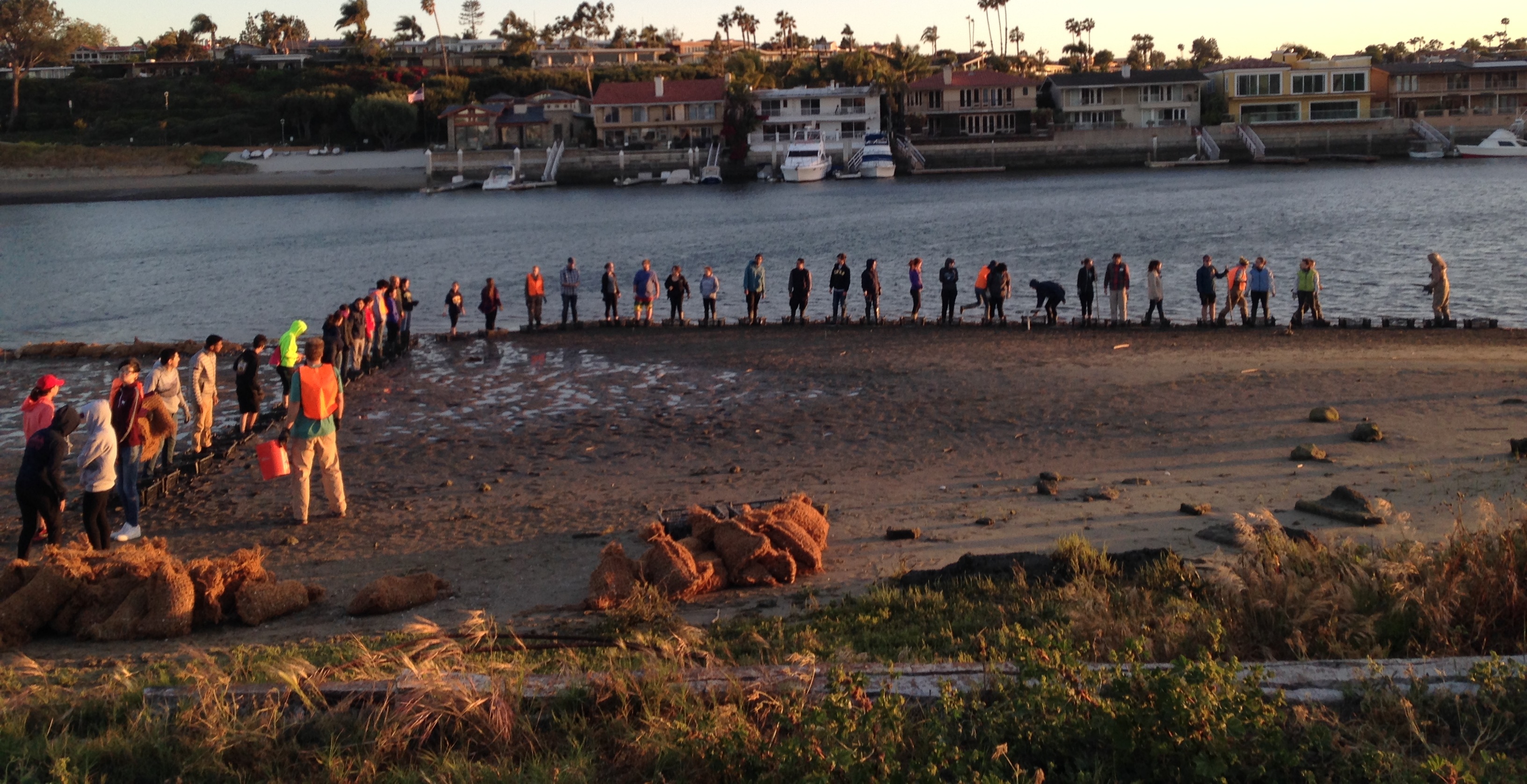
The overall goals of this project are to return historically present (but currently depleted) species to the area, enhance habitat quality and connectivity for fish and wildlife, improve water quality, control erosion, and help adapt to sea level rise. PMEP’s funding will help to integrate native Olympia oyster habitat restoration into a larger multi-species restoration project in Upper Newport Bay in Southern California. The project has added 240 square meters of oyster habitat and 1,280 square meters of eelgrass habitat. Restoration of oyster reefs and eelgrass beds will return many ecosystem services back to the area’s coastal wetlands. Oysters increase the abundance of fish and wildlife through the creation of complex habitat and improve water quality through filter feeding. Oysters also stabilize sediments, buffer erosion, and attenuate wave energy, which will reduce impacts of sea level rise. Eelgrass meadows provide similar ecosystem services, including habitat and foraging grounds for many invertebrates, fish, and bird species; nutrient cycling; carbon sequestration; sediment stabilization; and water quality improvement.
The overall goals of this project are to return historically present (but currently depleted) species to the area, enhance habitat quality and connectivity for fish and wildlife, improve water quality, control erosion, and help adapt to sea level rise. PMEP’s funding will help to integrate native Olympia oyster habitat restoration into a larger multi-species restoration project in Upper Newport Bay in Southern California. The project has added 240 square meters of oyster habitat and 1,280 square meters of eelgrass habitat.
Restoration of oyster reefs and eelgrass beds will return many ecosystem services back to the area’s coastal wetlands. Oysters increase the abundance of fish and wildlife through the creation of complex habitat and improve water quality through filter feeding. Oysters also stabilize sediments, buffer erosion, and attenuate wave energy, which will reduce impacts of sea level rise. Eelgrass meadows provide similar ecosystem services, including habitat and foraging grounds for many invertebrates, fish, and bird species; nutrient cycling; carbon sequestration; sediment stabilization; and water quality improvement. Simultaneous restoration of the Olympia oyster and eelgrass has never been attempted in southern California, but smaller restoration efforts of both species individually in Newport Bay have been successful. Because of the benefits, these species may have on each other, integrated restoration of the two species is the logical next step to recover greater ecosystem connectivity and function to Newport Bay.
Preliminary analysis of in-shore sediments shows plots with restored eelgrass have experienced an accumulation of finer grained sediments, suggesting that the restored eelgrass beds may be starting to mitigate in-shore erosion.
Human Interest/Community Benefit: We believe the creation of this more complex habitat mosaic which more closely resembles historic connectivity, will support a more diverse and abundant fish community. The ecosystem services provided by healthy oyster reefs and eelgrass beds help improve water quality and attenuate wave energy, benefiting the surrounding community and visitors. The project involves a robust group of community volunteers in the restoration and monitoring efforts. This has increased community engagement and stewardship in Newport Bay.
The project has involved many members of the community in a variety of aspects including University presentations, community events and engaging volunteers hands-on in restoration activities. Over 150 volunteers participated in the oyster field implementation in April 2017. In addition, Coastkeeper hosted oyster bag making workshops with students and Universities including Soka University, Saddleback University, Concordia University of Irvine and with the girl scouts of Southern California. To date, the project has utilized over 2,549 volunteer hours by over 450 volunteers.
Project Timeline:
Eelgrass restoration took place in June and July 2016, and oyster restoration took place in April 2017. Pre-restoration surveys began in January 2016 and continue on a twice-yearly schedule through 2 years after restoration to document baseline and post-restoration conditions. Pending additional funding we are hoping to expand and continue our monitoring to assess the use of the restored oyster and eelgrass habitat by juvenile and adult fish, invertebrates and the bird community.
Partners:
Orange County Coastkeeper,
PMEP,
California Coastal Conservancy,
California State Universities Fullerton, and Long Beach and San Diego,
The University of Southern California,
Anchor QEA,
The city of Newport Beach,
County of Orange,
California Department of Fish and Wildlife,
over 160 community volunteers
